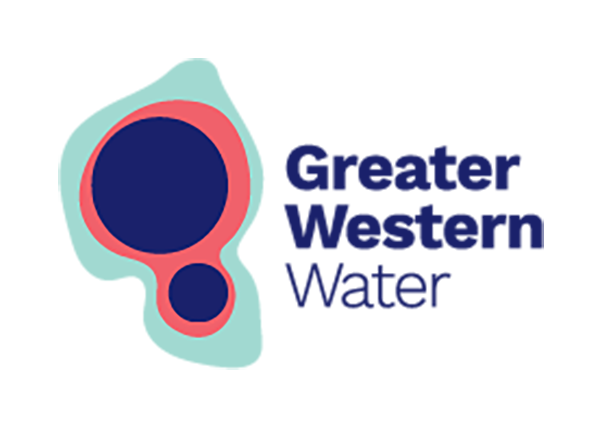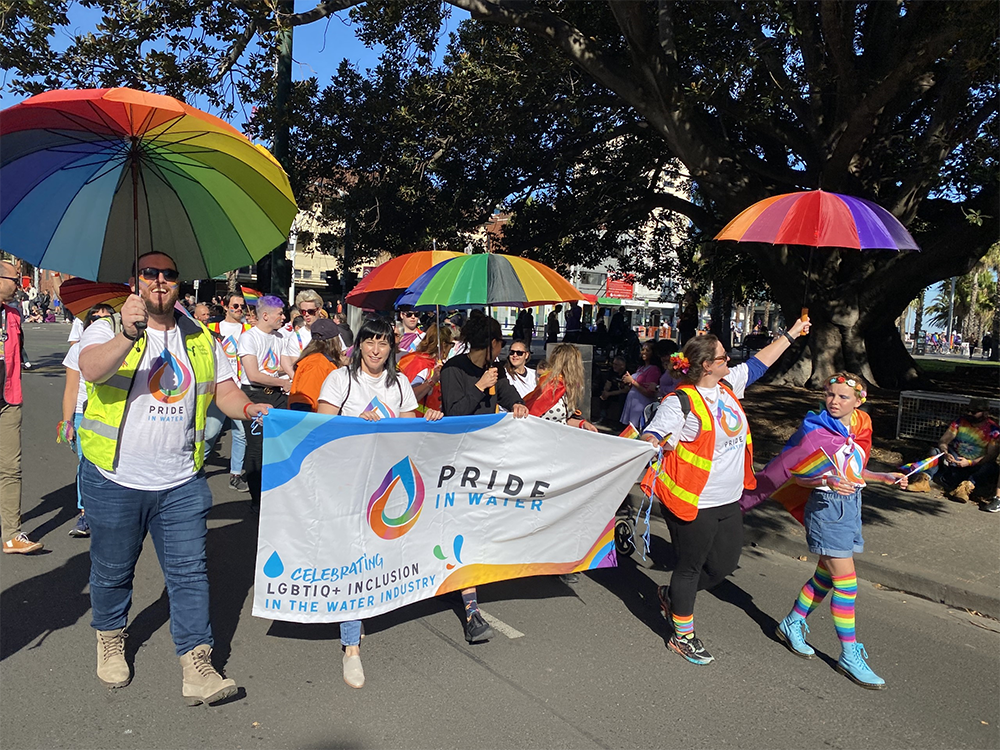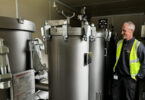
Tell us about Great Western Water?
Greater Western Water (GWW) is a government-owned water utility in Victoria, Australia, formed in July 2021 through the integration of two water corporations. GWW services around 580,000 customer properties across an area of 3,700 square kilometres. The vast service area spans across the centre of Melbourne’s busy commercial district through to rapidly growing suburbs in the west, continuing through to small regional towns on Melbourne’s outskirts. The company employs around 950 people and is deeply committed to diversity, equity, and inclusion.

What inspired you to join the water/wastewater sector, and tell us about your current role?
I’m the inaugural Managing Director of Greater Western Water. Prior to this role, I have held leadership positions in the water industry for more than nine years. I also hold an MBA (Prof) from Melbourne Business School and degrees in Chemical Engineering (Honours) and Commerce from Monash University, Victoria.
My inspiration to work in the water industry stems from my passion to serve communities, form partnerships, and to deliver great outcomes. Water and wastewater services are essential to everyday wellbeing, and each day, GWW provides these services to over 1.3 million customers from 130 different cultures. Knowing that I play a role in delivering essential services across such an incredibly diverse region that stretches beyond the city to the regional areas, is humbling and deeply rewarding.
The water industry is also extremely diverse, and complex and provides significant opportunities for learning. The challenges along the way have helped me find new ways of thinking and working. In 2018, I was acknowledged for my accomplishments in leadership and was listed in the IPAA, Victoria, Top 50 Women in the Public Sector. This was an incredible moment for me and has inspired my continued work in leadership, specifically generating progress in areas that I’m particularly committed to – namely diversity, equity, and inclusion in the workplace.
Do you feel that women are adequately represented in the water industry? If not, what are some of the ways we can make the workforce more representative?
Women are often underrepresented in leadership roles and overrepresented in lower-level roles. This disparity of female representation in the workforce is one of the crucial issues leading to the gender pay gap but it also means that organisations are missing out on the expertise and skills of women at senior levels and in leadership roles.
To facilitate change, all 19 Victorian water corporations have committed to the Water Industry Equity, Diversity & Inclusion Strategy 2019-2023 which aims to collectively achieve a 50:50 gender balance in senior leadership roles. This year we have achieved 44% women in Managing Director roles across the Victorian Water Sector.
In addition, many of the water corporations, including GWW, are developing and implementing their own strategies to achieve gender diversity and inclusion within their workplace. While GWW is a new corporation, we’ve been able to build on the excellent work of our legacy organisations across remuneration, equality targets and audits, education, recruitment, partnerships, mentoring and scholarships. Through collecting, reporting, and analysing data, we’ve been able to identify where our organisation will benefit from a greater representation of women and we’re working to address these gaps. Audits have also helped us identify the areas where we’re succeeding and we’re proud to acknowledge and celebrate these achievements too. At GWW, we set a target of 45-55 per cent female representation at all employment levels – this target reflects a more inclusive view of gender allowing a 10% range to reflect gender diverse people.
Our audit results show that we have met our targets for gender balance at all levels except level 3 (mid-leadership level). So, while we still have some work ahead of us to ensure women are equally represented at work, we’re also well above the industry standard.
What are the benefits of having a clear diversity, equity, and inclusion company policy?
Having company policies and strategies for DEI is vital for organisations to be able to set a clear focus and commitment. A policy also helps raise awareness amongst employees of the organisation’s principles and expected behaviours. This is paramount because equality in the workplace is not possible with a minority, it takes a joint effort; all employees need to be committed to the values and behaviours needed to ensure the workplace environment is respectful and free from discrimination.
There’s no doubt that policies are important, but without a structured, transparent strategy to implement them and transform ideas into actions they could fall short. Equally, while audits and reports can help us establish targets, data on its own is not sufficient to create equality. Each method provides value but shouldn’t be the only ways to achieve positive outcomes. A recent study by McKinsey is a great example of this. The 2021 Women in Workplace Report identified that women in leadership roles often took on heavier workloads and experienced more stress and exhaustion than their male counterparts. This study demonstrates that while numbers might look good on paper, quantitative methods are not enough to fully understand the experience of women in the workplace, and more qualitative methods are required too.
Does your current organisation has a clear diversity, equity, and inclusion company policy?
We have a Diversity and Inclusion Framework and Plan which provides clear, goal-orientated steps for achieving our targets. We have six focus areas for the framework: gender, accessibility, LGBTIQA+, cultural and linguistic diversity, life stage and First Nations. GWW has also recently developed a Gender Equality Action Plan which is in line with the Victoria’s Gender Equality Act 2020, the first legislation of its kind in Australia. The new plan is another critical step in ensuring equity can be measured and implemented across the organisation. These policies and plans set our clear intent to create a diverse and inclusive workplace where everyone is valued, respected, and engaged. They allow us to identify any issues that exist and provide practicable tactics for creating positive change. It’s important to note, our strategies for creating an inclusive and equitable workplace are not stagnant. They are flexible and regularly reanalysed and updated to ensure ongoing progress.
What steps are you taking to encourage women’s growth within your organisation
GWW has identified key areas where we can support women and encourage growth within our organisation. The four key goals for GWW are: to achieve and retain gender equality in leadership across all levels, to improve economic security for women, to achieve greater gender diversity in customer, operational, field and STEM functions, and to build a safe, respectful workplace that promotes gender equality and challenges discrimination.
Some of the practical ways we are achieving these goals is through creating targeted programs that support women with career development, implementing a remuneration policy that addresses the gender pay gap, and offering all employees a flexible work environment. We are also proactive with creating training opportunities and have established partnerships with universities and technical schools to promote women in Science, Technology, Engineering and Mathematics (STEM) mentoring programs and scholarships.
What are your hopes for the future of women in the water/wastewater sector?
As we look to the future, I think GWW is in a unique position in the water/wastewater sector to be able to achieve the targets it has set out to accomplish. We are still in the construction phase of building the culture for our new organisation, but we have the added benefit of a strong heritage that exists through our legacy organisations. We can use both these elements to create a culture where our people not only achieve our goals but thrive. Ideally, a future work environment would be a place where people no longer need to make an extra effort to ensure workplaces are fair, respectful, and anti-discriminatory, because these values are already deeply embedded in the culture. However, until this happens, there will always be work required to ensure workplaces achieve and maintain equity, diversity, and inclusion for all.
Do you have an article or video that you would like to share? Submit your article here or keep up with the latest news from the water industry and wastewater industry by subscribing to our weekly newsletter







